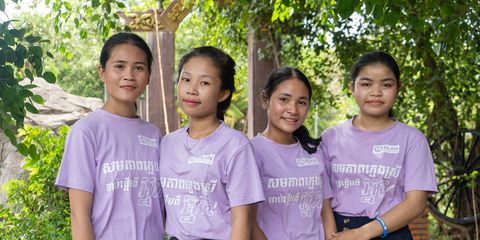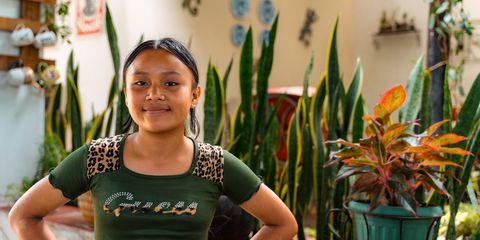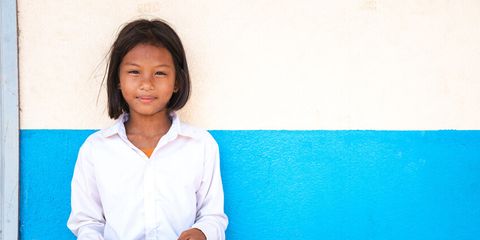Real Choices Real Lives: Climate Change and Girls’ Education (2024)
Insights from Benin, Togo and Uganda
Insights into the experiences of girls in Benin, Togo and Uganda on how climate change impacts girls' education, and how this intersects with existing gendered barriers to education.
Since 2006, Plan International’s Real Choices, Real Lives study has been following a cohort of girls and their families from nine countries in three regions – including Africa.
This unique longitudinal and qualitative study conducts annual data collection with girls and their caregivers, offering valuable insights into the experiences of girls during childhood and adolescence, including the decisions and realities that shape their lives. By hearing from girls in their own words, this study gives us unique access to girls’ views, aspirations, and recommendations for change.
In 2023, Real Choices, Real Lives published research that explored the relationship between climate change and girls’ education across the nine focal countries.
Now, in 2024, we have explored in depth the experiences of the cohort girls in the three African focal countries: Benin, Togo and Uganda. In this report, we explore the direct and indirect impacts of climate change on girls accessing school and completing their education, and how these impacts intersect with existing gendered barriers to education. We also explore how their education is supporting the girls to respond and adapt to climate change in their communities.
Download the report here:
RCRL – Africa Climate Change & Education – English
4.86 mb
RCRL – Africa Climate Change & Education – French
4.87 mb
Key findings:
Girls are missing school because of direct impacts of climate change: their schools are damaged by extreme weather events and closed for repairs in the aftermath, or girls’ journeys to school become obstructed or damaged, disrupting their education.
“Floods makes roads inaccessible which makes my journey to school difficult and at times [I’d be] missing school.”
Nimisha*, 17, Uganda
Climate change is leading to loss of livelihoods and deepening deprivation – and this is impacting girls’ access to education. As unpredictable weather patterns impact agriculture and fisheries, family incomes fall and food prices increase. The girls report that their parents are strugging to pay for their school fees. Girls’ educational prospects are abandoned as families struggle to find food and fund their daily lives – although many families are trying their best to find the money for school fees.
“Crop failures are more frequent now. We grow crops but they don’t produce well.”
Fezire*, 17, Togo
Education is key to the girls’ climate change adaptation efforts. Where schools have strong climate change curriculum, the girls demonstrate more knowledge about climate change, greater confidence in applying adaptation strategies in their households and communities.
“Preparing in time and knowing about the weather forecast can help because it will not be abrupt when it is shining or raining – you will always be prepared.”
Justine, 17, Uganda
Yet the girls report that their curricula “is not enough” to prepare them to adapt to climate change. They want to learn more about the causes of climate change, ways to protect their environment, and how to apply adaptive strategies in their households and communities.
“It’s not enough. I want us to learn about the damage that can be done and also about many of the things that climate change creates, but we don’t go into them in depth in school lessons.”
Annabelle, 17, Benin
Girls’ recommendations for systemic change:
The girls have recommendations for systemic change which ask action of their schools, wider communities and governments, the report proposes a set of recommendations:
- Make schools safe: by repairing infrastructure damage as quickly as possible and having robust gender-and age-aware disaster planning in place, as to minimise disruption to learning by having continuity plans for lesson delivery.
- Improve climate change curricula: by embedding gender-transformative climate change education into school curricula and improving the knowledge and teaching skills of the staff who deliver it.
- Create better conditions for climate change adaptation and education: by providing financial support for families whose incomes have been affected by climate change so that increased poverty does not threaten girls’ education. And ensuring that the voices of adolescent girls are heard in climate change decision-making at all levels.
* The names of the girls in this report have been changed to ensure their anonymity.


